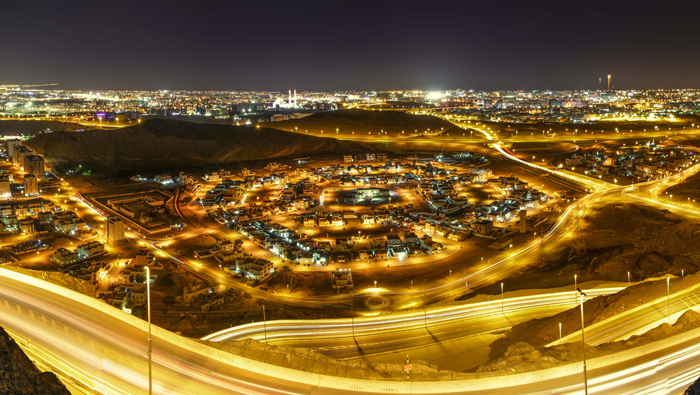
MUSCAT: The Oman government’s economic policies and reforms have been praised by a leading US-based institute.
The report by an expert was published by the Arab Gulf States Institute in Washington (AGSIW), an independent, nonprofit institution dedicated to highlighting the importance of the relationship between the United States and the Gulf region through free and open exchange of multiple points of view on issues that concern the region.
Written by Robert Mogielnicki, a senior resident scholar at AGSIW, it said that the Oman government deserves credit for sound economic policymaking and reform process.
“The government approved a $5.2 billion investment fund, the Oman Future Fund, to support diversified economic growth. Moreover, the government announced plans for a new development project, Sultan Haitham City, on the outskirts of Muscat, where as many as 100,000 citizens are expected to receive housing and other essential services. This dual announcement neatly encapsulates the current position of Omani economic policymakers: growing confidence alongside a recognition of genuine constraints.
“Oman is getting its economic house in order, creating a stronger fiscal position, establishing greater resilience to energy price volatility, and building a more attractive investment destination over the near term. Sound economic policymaking and reform progress deserve praise but do not necessarily put Oman on the path to becoming a regional economic superstar. The Sultanate’s economy faces macroeconomic headwinds, structural challenges, and rising regional competition. Thus, the longer-term outlook for Oman’s economy remains uncertain.”
The report added: “For now, there are plenty of reasons for optimism. His Majesty Sultan Haitham bin Tarik inherited a state in urgent need of reform amid a coronavirus-induced economic downturn. The cumulative effect of year-on-year fiscal deficits, high government debt levels, uncertain demand for sovereign bonds, and a bloated public sector created a tenuous economic situation.
“Yet the government established a roadmap for and prioritisation of economic reforms – and it has delivered.
“The Medium Term Fiscal Plan (MTFP) for 2020-24 offers a clear path toward greater fiscal sustainability. Oman’s overall fiscal deficit averaged 12.8 percent of gross domestic product from 2015-20, while the budget deficit reached approximately 3.6 percent in 2021.
Oman enjoyed a budget surplus of approximately 5 percent of GDP in 2022 – the country’s first surplus since 2013 – and is expected to post a minor surplus in 2023. Although the fiscal breakeven price of oil stood at an estimated US$77 per barrel in 2022, officials see that figure declining to US$67 by 2025 in light of ongoing fiscal consolidation measures.”
Non-oil revenue streams
The report said that new taxes have increased non-oil revenue streams. Oman rolled out its value-added tax in April 2021 – later than the United Arab Emirates, Saudi Arabia, and Bahrain but before Qatar and Kuwait, which have still yet to do so.
It added: “Oman’s general government gross debt to GDP ratio – which skyrocketed from 4 percent in 2014 to around 70 percent in 2020 – dropped to 40 percent in 2022, down from 61 percent in 2021. Rapid GDP growth owing to high energy prices explains some of the movement in these figures, but reducing government debt is now a policy priority. The Oman Investment Authority has worked systematically to consolidate the country’s state-owned entity sector, which is a major contributor to the country’s overall government debt burden, and reduce inefficiencies and waste.”
Mogielnicki wrote that “demonstrable progress on sustainable spending, diversifying public sector revenue sources, and reducing government debt have made Oman a darling of debt markets.”
In April, both Fitch Ratings and S&P Global Ratings revised Oman’s outlook to positive. Oman issued development bonds – the instruments that finance development projects in the country’s five-year development plans – earlier in the year, raising approximately US$195 million.
Higher energy prices played an important role in these positive economic indicators. The price of Brent crude oil jumped from US$70.89 per barrel in 2021 to US$100.94/bbl in 2022, and the U.S. Energy Information Administration forecasts that prices will settle around US$78.65/bbl in 2023 and US$74.47/bbl in 2024.
The report said: “With that, Oman’s real GDP growth rate will slow from 4.3 percent in 2022 to below 2 percent in 2023. This growth trajectory tracks with oil price movements because government finances and – to a lesser degree – the broader economy remain closely linked to the oil and gas sector. Nevertheless, Oman’s government officials are serving as responsible stewards of the most recent windfall from energy exports.
Despite a deceleration of growth in 2023, the International Monetary Fund (IMF) expects growth to tick upward to 5.2 percent in 2024, following significant investments in hydrogen and renewables.
The report said: “Oman’s aspiration to “become one of the largest green hydrogen producers and exporters globally,” has generated substantial interest from international energy companies and investors.”
The Omani hydrogen company Hydrom, a subsidiary of Energy Development Oman, has signed agreements with developers for large-scale, integrated green hydrogen projects valued at tens of billions of dollars over the next several years. Meanwhile, the Oman Water and Power Procurement Company is pushing ahead with major solar power and wind projects.
The report also mentioned that one of the major challenges in the coming years will be addressing employment-related concerns.
Oman does not enjoy massive sovereign wealth holdings, which regional governments have used effectively to help insulate citizens from reforms, stimulate their domestic economies, and form high-profile investment partnerships on the global stage. The Oman Investment Authority oversees approximately $41 billion in assets under management.
The report concluded by saying: “Oman can differentiate itself from regional counterparts by adopting a measured, consistent approach to economic policymaking as well as accepting modest progress. While this trajectory may not transform Oman into a premier global business hub, it may reveal that profligate spending is not necessarily the best foundation for a sustainable economic future.”